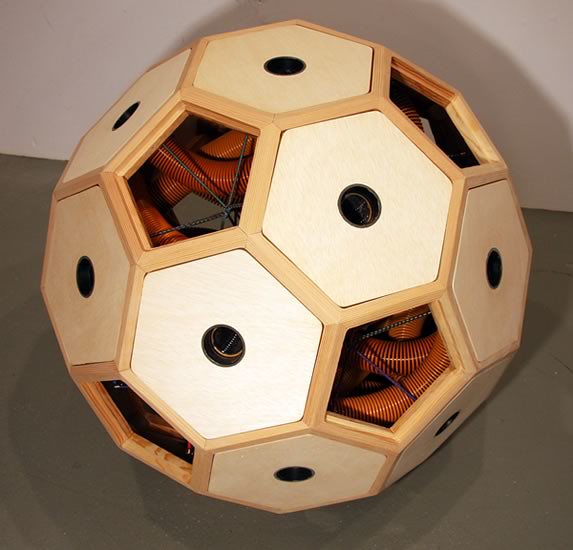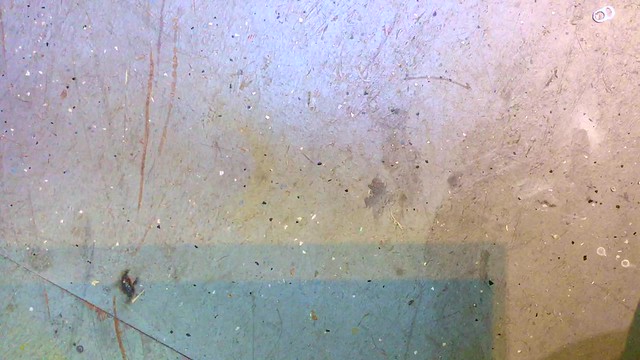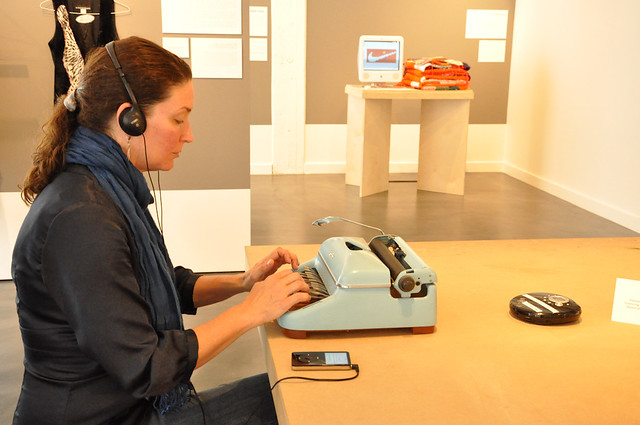Carla Kihlstedt strummed her megaphone-like violin and sang along; Pauline Oliveros meditated with her solo accordion, amidst a crowd of hundreds; Terry Dame fused the rhythms of Balinese Gamelan with American Funk; and someone played the Bible on a computer - it's an honor that all these unusual performances were a part of the 20-year saga of Music for People & Thingamajigs Festival.
Great time has passed in the collection of rich sonic experiences; and in the discovery of a community across oceans and skies. As Thingamajigs finds itself at the depths of the world of everyday musical explorations, our history calls out to us, to thank all those who have shared this tremendous voyage.
“The more you looked, the more we found.”
To understand why the event evoked such a deep connection for many, we spoke to Larnie Fox, who has been a long-term collaborator.
He found Thingamajigs (which at that time was the same as the festival) to be a precursor to the maker movement, that encouraged ‘messing in interesting ways’, and created a unique platform with diversity of expression.
“I like the idea that tuning systems do not have to be fixed”
The story of Thingamajigs, like many others, began with simple goals. Edward Schocker and Dylan Bolles set up a forum to network with other artists and musicians, only to learn about their works in alternate tuning systems. Music for People & Thingamajigs - a college project, became a music festival the following year, and like history goes, it repeated itself annually for the next two decades.
Dylan Bolles recalls that early on, the festival attracted both aspiring musicians and established performers. The same stage that saw the legendary percussionist William Winant perform Lou Harrison's pieces, also hosted many new-age experimental music mavericks. The network, still niche, widened and strengthened simultaneously. Soon after, along with musicians, the annual event showcased works in collaboration with poets, writers, dancers and artists from various disciplines.
It was only natural that one day, Music for People & Thingamajigs Festival, opened its doors to all in the world of unusual sounds and experimental music.
“Art world typically focuses on a narrow band of social practices. Thingamajigs is out of the box.”
The varied perceptions and interpretations continued to add new dimensions to the festival, and led to the formation of Thingamajigs - a community that would inspire deeper, insightful conversations around atypical ways to make sounds.
“The Electric Junkyard Gamelan found a way to make non-musicians interested in what they do”
Bart Hopkin believes that Thingamajigs helped create circumstances in which such a dialog could take place. It brought diverse groups of artists together, and provided substance and centrality to underlying questions of how they made musical sounds, took it in, and shared it.
Bart Hopkin, one of the early festival performers, shed light on the spirit that glued the community, through a story he shared with us.
Many years ago, he gathered with other artists for a radio talk on Thingamajigs. The group was posed with a question about John Cage and the composer’s recognition in Thingamajigs’ works. Bart recalled Walter Kitundu's response, which he found to be a revelation.
“The most important inspirations for many of us have been the sources as yet uncannonized, many even scarcely noticed, in which so much of the world’s sound riches lie.”
“I initially conceived it as an unpredictable and chaotic object that would roll around as it was being played.”
“It always starts with the sound of the instrument and my interaction with the co-performers.”
“In a way we can describe thoughts as rhythmic pulsations, and the way that we think is to leap from one rhythmic pulsation to another to create images. ”
“You can do a lot with technique in one particular area with one particular thing - and that’s where the music comes from.”
“I find it interesting that when you hit an object over an object, it makes a different sound.”
“The toy piano is a toy, but it’s also a musical instrument in the same sense that a lot of things in our everyday lives can be musical instruments.”
We, the people of Thingamajigs, are honored to have the friendship, support and artistic contributions of many such great creators. To look at the project of 1997, and see it in the form of an organization that now offers arts and education programs in the field of unusual music, our hearts swell with gratitude.
Thank you for the spectacular road that you paved with us.






